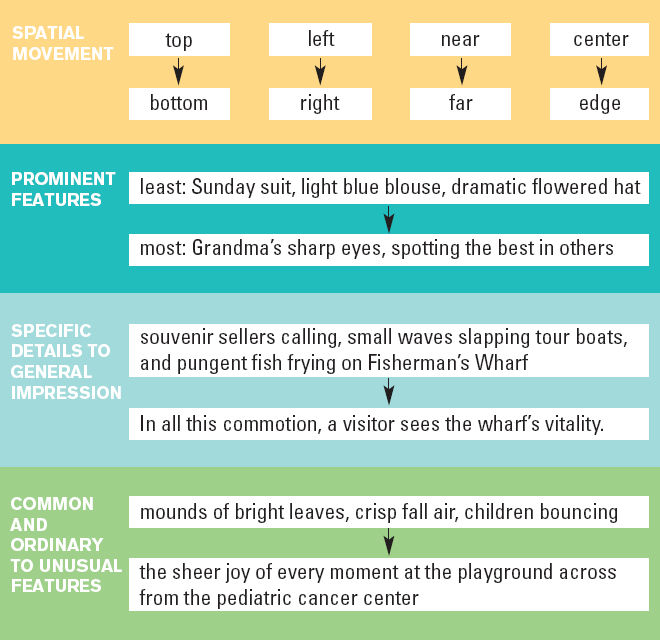Planning, Drafting, and Developing
For more strategies for planning, drafting, and developing, see Chs. 20, 21, and 22.
See more on stating a thesis.
After recording your observations, look over your notes, circling whatever looks useful. Maybe you can rewrite your notes into a draft, throwing out details that don’t matter, leaving those that do. Maybe you’ll need a plan to help you organize all the observations, laying them out graphically or in a simple scratch outline.
For practice developing effective thesis statements, go to the interactive “Take Action” charts in Re:Writing.
Start with a Main Impression or Thesis. What main insight or impression do you want to convey? Answering this question will help you decide which details to include, which to omit, and how to avoid a dry list of facts.
| PLACE OBSERVED | Smalley Green after lunch |
| MAIN IMPRESSION | relaxing activity is good after a morning of classes |
| WORKING THESIS | After their morning classes, students have fun relaxing on Smalley Green with their dogs and Frisbees. |
See more organization strategies.
See transitions that mark place or direction.
Organize to Show Your Audience Your Point. How do you map out a series of observations? Your choice depends on your purpose and the main impression you want to create. Whatever your choice, add transitions — words or phrases to guide the reader from one vantage point, location, or idea to the next. Consider options such as those shown on the next page.
As you create your “picture,” you bring a place to life using the details that capture its spirit. If your instructor approves, consider whether adding a photograph, sketch, diagram, or other illustration — with a caption — would enhance your written observation.
